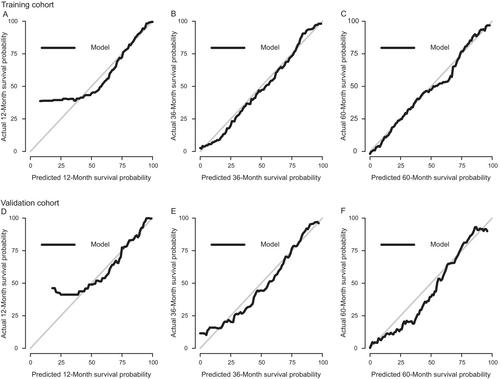A Prognostic Model Based on Nutritional Indexes for Patients With Pan-Cancer: A Real-World Cohort Study
Abstract
Background
The aim was to identify the nutritional indexes, construct a prognostic model, and develop a nomogram for predicting individual survival probability in pan-cancers.
Methods
Nutritional indicators, clinicopathological characteristics, and previous major treatment details of the patients were collected. The enrolled patients were randomly divided into training and validation cohorts. Least absolute shrinkage and selection operator (Lasso) regression cross-validation was used to determine the variables to include in the cox regression model. The training cohort was used to build the prediction model, and the validation cohort was used to further verify the discrimination, calibration, and clinical effectiveness of the model.
Results
A total of 2020 patients were included. The median OS was 56.50 months (95% CI, 50.36–62.65 months). In the training cohort of 1425 patients, through Lasso regression cross-validation, 13 characteristics were included in the model. Cox proportional hazards model was developed and visualized as a nomogram. The C-indexes of the model for predicting 1-, 3-, 5-, and 10-year OS were 0.848, 0.826, 0.814, and 0.799 in the training cohort and 0.851, 0.819, 0.814, and 0.801 in the validation cohort. The model showed great calibration in the two cohorts. Patients with a score of less than 274.29 had a better prognosis (training cohort: HR, 6.932; 95% CI, 5.723–8.397; log-rank p < 0.001; validation cohort: HR, 8.429; 95% CI, 6.180–11.497; log-rank p < 0.001).
Conclusion
The prognostic model based on the nutritional indexes of pan-cancer can divide patients into different survival risk groups and performed well in the validation cohort.


 求助内容:
求助内容: 应助结果提醒方式:
应助结果提醒方式:


